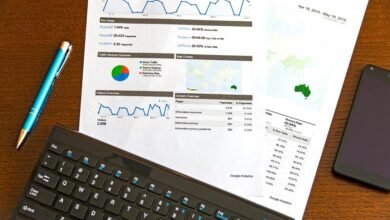2085325025 Inbound Vs Outbound Traffic Flow

The dynamics of inbound and outbound traffic flow significantly influence urban environments. Inbound traffic often reflects demand for access, while outbound traffic indicates the dispersal of that demand. Understanding these patterns is essential for urban planners aiming to enhance transportation systems. Effective management can alleviate congestion and foster economic growth. However, the complexities of these interactions raise critical questions about infrastructure needs and sustainability. What strategies can be employed to optimize this balance?
Understanding Inbound Traffic Flow
Inbound traffic flow refers to the movement of vehicles, pedestrians, and other forms of transportation entering a specific area or destination.
Understanding this flow involves analyzing traffic sources and user behavior, revealing patterns that inform strategic planning.
Exploring Outbound Traffic Flow
Outbound traffic flow encompasses the movement of vehicles, pedestrians, and goods as they exit a designated area or community.
Understanding outbound strategies is essential for optimizing traffic patterns, ensuring efficient transit, and enhancing user experience.
The Interplay Between Inbound and Outbound Traffic
While the dynamics of traffic flow often emphasize either inbound or outbound movement, the interaction between these two forces significantly influences overall transportation efficiency.
Understanding traffic patterns reveals how inbound and outbound traffic can create congestion or facilitate smooth transit.
Effective congestion management requires a strategic approach to balance these flows, ultimately enhancing the freedom of movement within urban environments.
Strategies for Optimizing Traffic Flow Efficiency
Balancing the interplay between inbound and outbound traffic is pivotal for enhancing overall transportation efficiency.
Effective traffic management employs data analysis for route optimization, utilizing advanced vehicle tracking and flow simulation.
Implementing strategic signal timing enhances congestion reduction while prioritizing safety measures.
These interconnected strategies create a harmonious traffic environment, fostering freedom of movement and ensuring a seamless transit experience for all road users.
Conclusion
In the intricate dance of urban dynamics, optimizing inbound and outbound traffic flow is akin to composing a symphony, where each note harmonizes to alleviate congestion and enhance accessibility. Understanding these movement patterns not only paves the way for efficient transportation but also nurtures economic vitality and community well-being. As urban planners wield their tools with foresight, they craft a vibrant tapestry of connectivity, ensuring that the lifeblood of the city flows freely and sustainably for generations to come.




